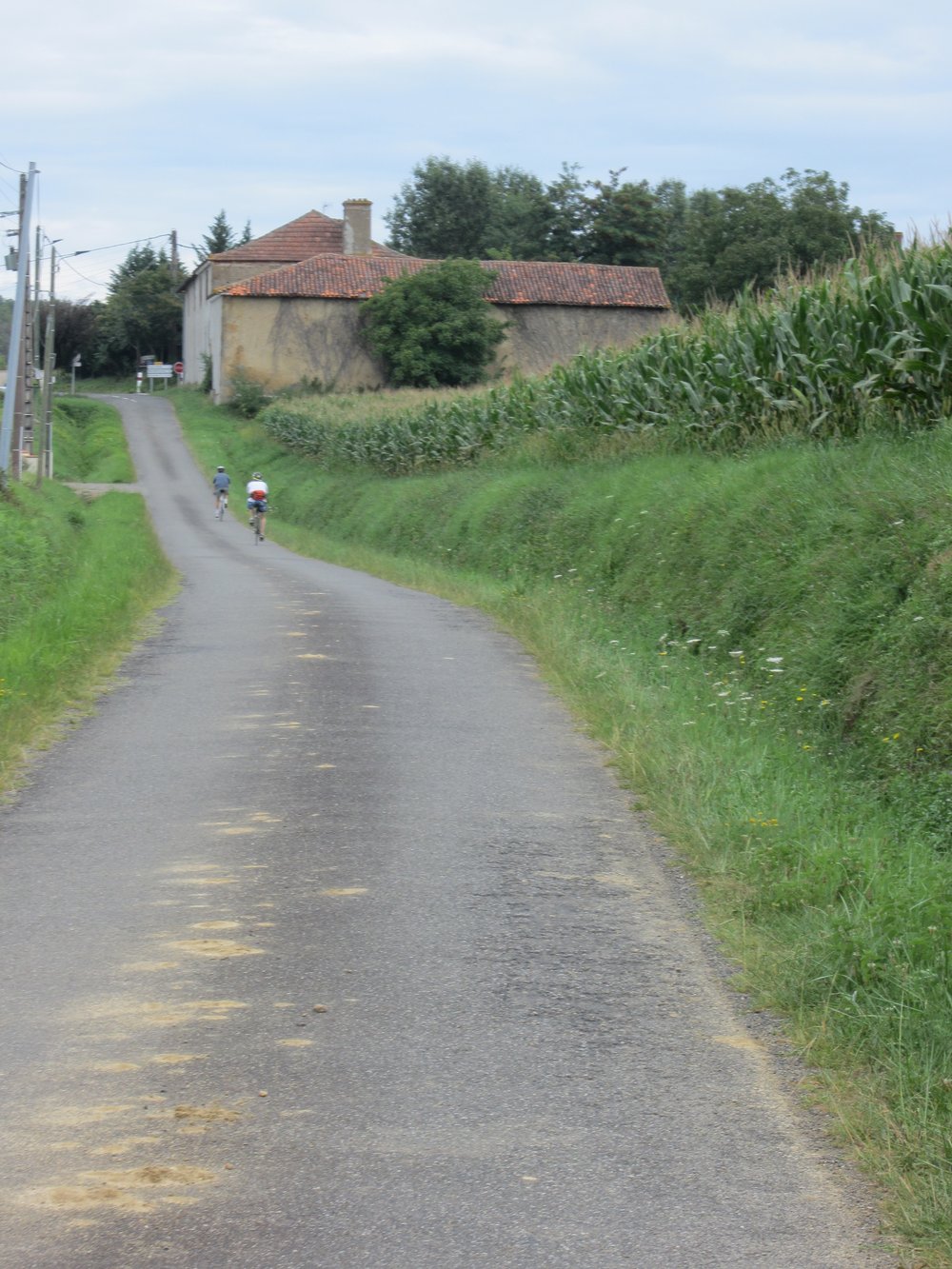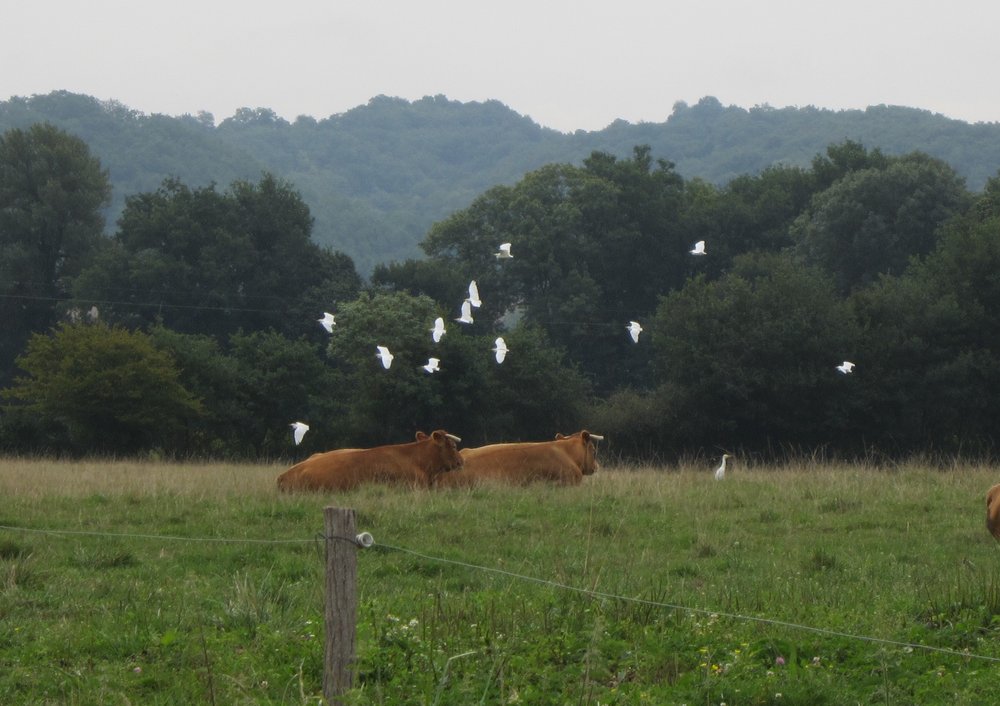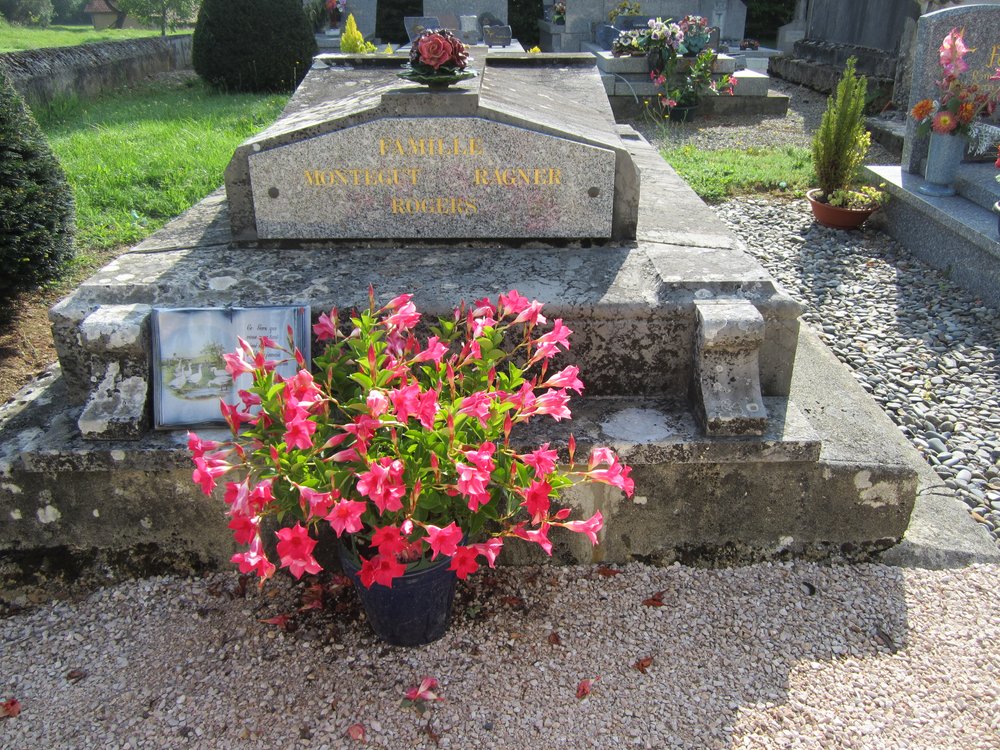 The road that leaves the D 146 and climbs west, uphill, is narrow and steep. It is there that Olivier and Becky are waiting for me, resting against their bicycles. “You missed seeing a Hen Harrier,” I tell them. They look less than interested as they stand in the shade of a farmhouse, a bit red from exertion and the sun. “The thing is,” I say, by way of trying to get them to care about my excitement, “is that my life is better for seeing this bird.” I’m joking and they laugh, but the truth is I kind of believe what I’ve just said.
The road that leaves the D 146 and climbs west, uphill, is narrow and steep. It is there that Olivier and Becky are waiting for me, resting against their bicycles. “You missed seeing a Hen Harrier,” I tell them. They look less than interested as they stand in the shade of a farmhouse, a bit red from exertion and the sun. “The thing is,” I say, by way of trying to get them to care about my excitement, “is that my life is better for seeing this bird.” I’m joking and they laugh, but the truth is I kind of believe what I’ve just said.
I saw the Harrier hovering over a wide field. It looked like it was suspended from the sky itself, staying miraculous in place as it targeted the ground. There was a glint of red, and a fanned tail. Then it dropped, like a ball dropping from the sky and vanished into the grass. I figured it would take a while for it to conduct its killing business so I bicycled on, not wanting to keep my sister and brother-in-law waiting too long.
We all shift into low gears as we prepare for the steep uphill ride that will take us up and over into the neighboring valley. The road is narrow, one-lane, gravelly, and winding. As we bike—slowly—I admire the pink and white cosmos in bloom by the side of the road, the queen anne’s lace that spreads across fields, and the acacia trees with their wispy red flowers. To our left, in the distance, we see the outline of the Pyrenees, especially the dramatic rise of the Pic du Midi. The houses of Antin thin and we’re soon surrounded by woods. There is a false summit, with a miniature valley positioned high in the hills. A few houses sprinkle the landscape, so isolated from the rest of the world. “It’s these inter-valley communities that interest me,” Becky says. And me too. The people who live here speak their own patois, live with little contact with their neighbors. It’s amazing to think of the isolation in such a busy country. Every small farm house that we pass has its own odor depending on what they are raising: Geese and ducks, an odor that is sharp in the back of the nose; beef cows, a flatter smell that mixes with the earth; milk cows, all sweetness.



